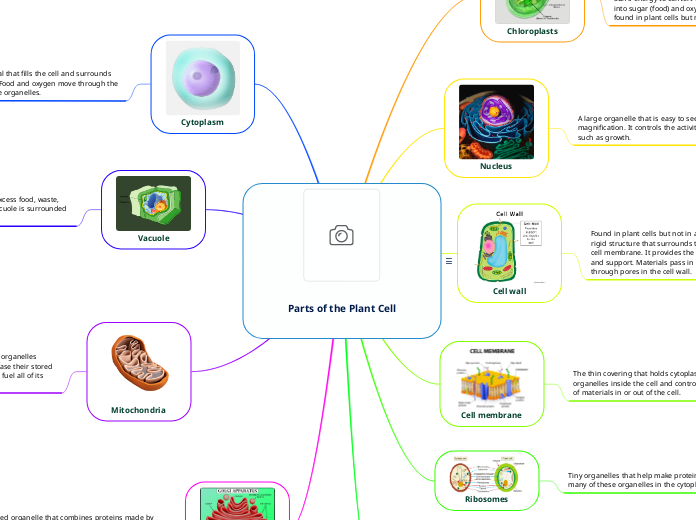
Parts of the Plant Cell
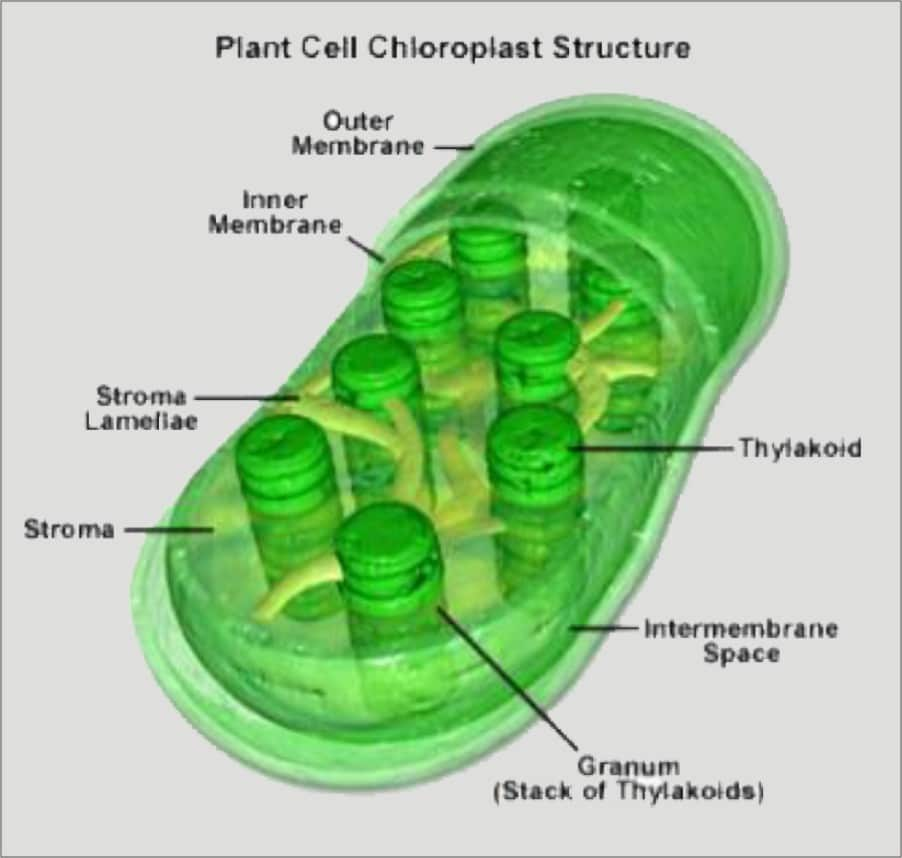
Chloroplasts
Membrane-bound organelles that contain a green substance (pigment) called chlorophyll. In a process called photosynthesis, chlorophyll uses the Sun's energy to convert carbon dioxide and water into sugar (food) and oxygen. Chloroplasts are found in plant cells but not in animal cells.
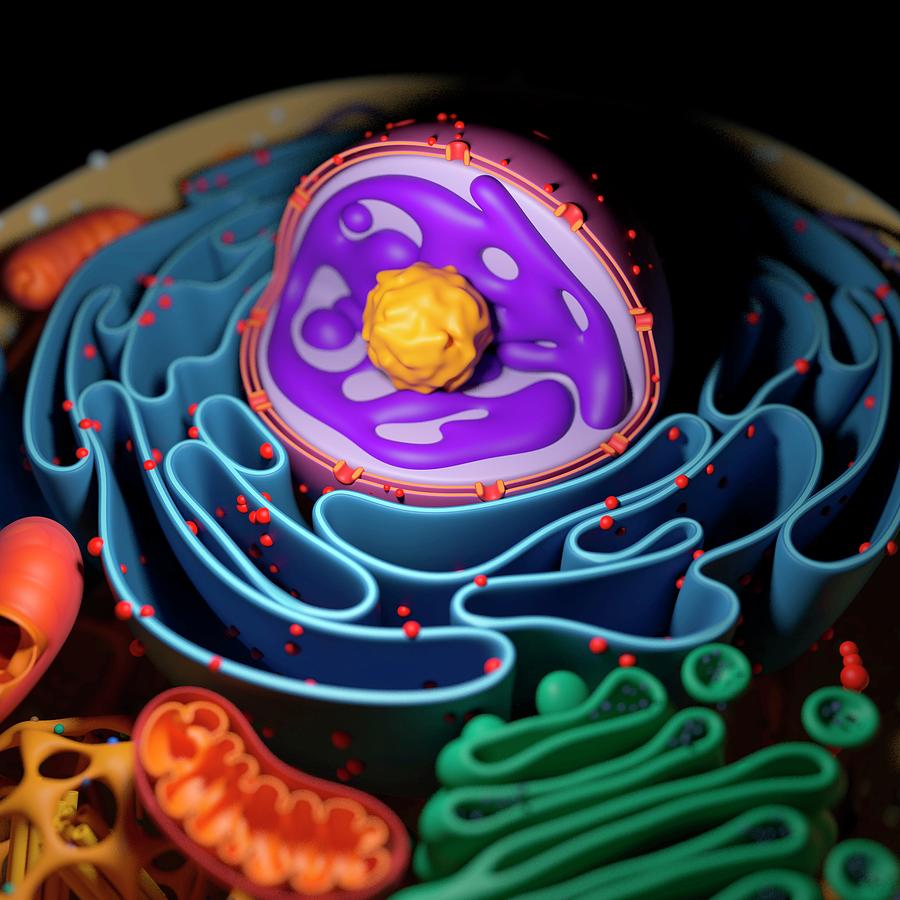
Nucleus
A large organelle that is easy to see under magnification. It controls the activities of the cell, such as growth.
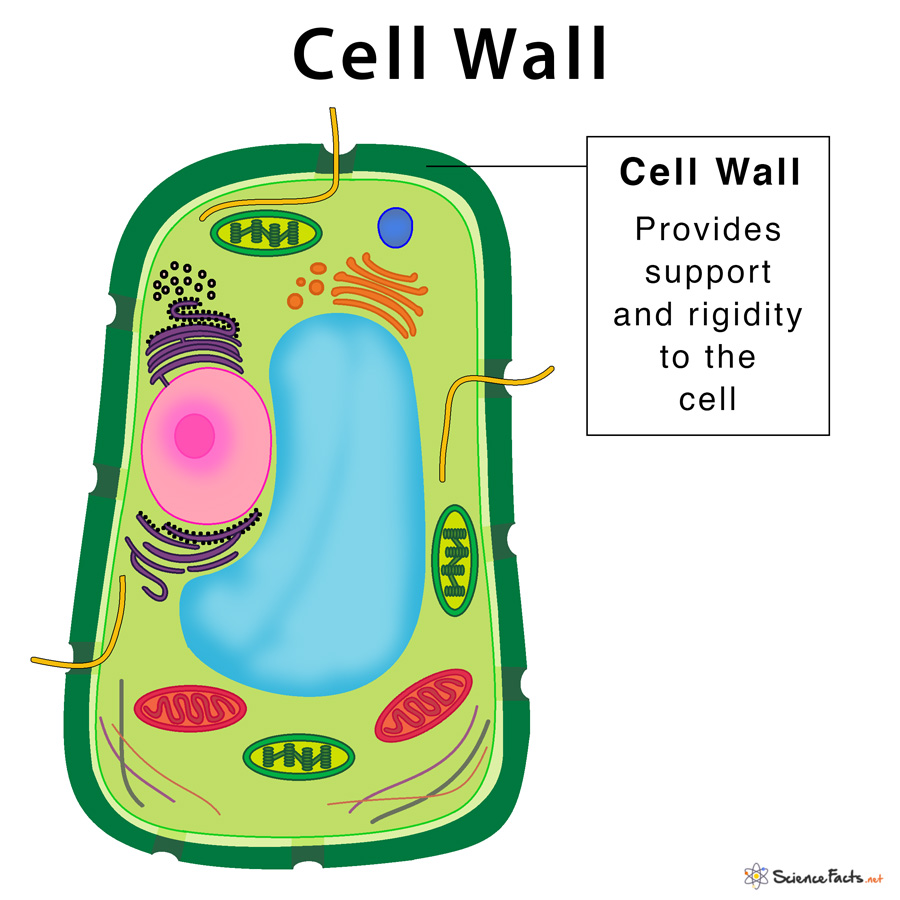
Cell wall
Found in plant cells but not in animal cells. The rigid structure that surrounds that surrounds the cell membrane. It provides the cell with strength and support. Materials pass in or out of the cell through pores in the cell wall.

Cell membrane
The thin covering that holds cytoplasm and the organelles inside the cell and controls the passage of materials in or out of the cell.
.png)
Ribosomes
Tiny organelles that help make proteins. There are many of these organelles in the cytoplasm
Endoplasmic reticulum
A folded organelle that makes proteins.
Cytoplasm
Jelly-like material that fills the cell and surrounds the organelles. Food and oxygen move through the cytoplasm to the organelles.
/2000px-Plant_cell_structure_svg_vacuole.svg-58a886443df78c345bf8d009.png)
Vacuole
A large organelle that stores excess food, waste, and other substances. Each vacuole is surrounded by a membrane.
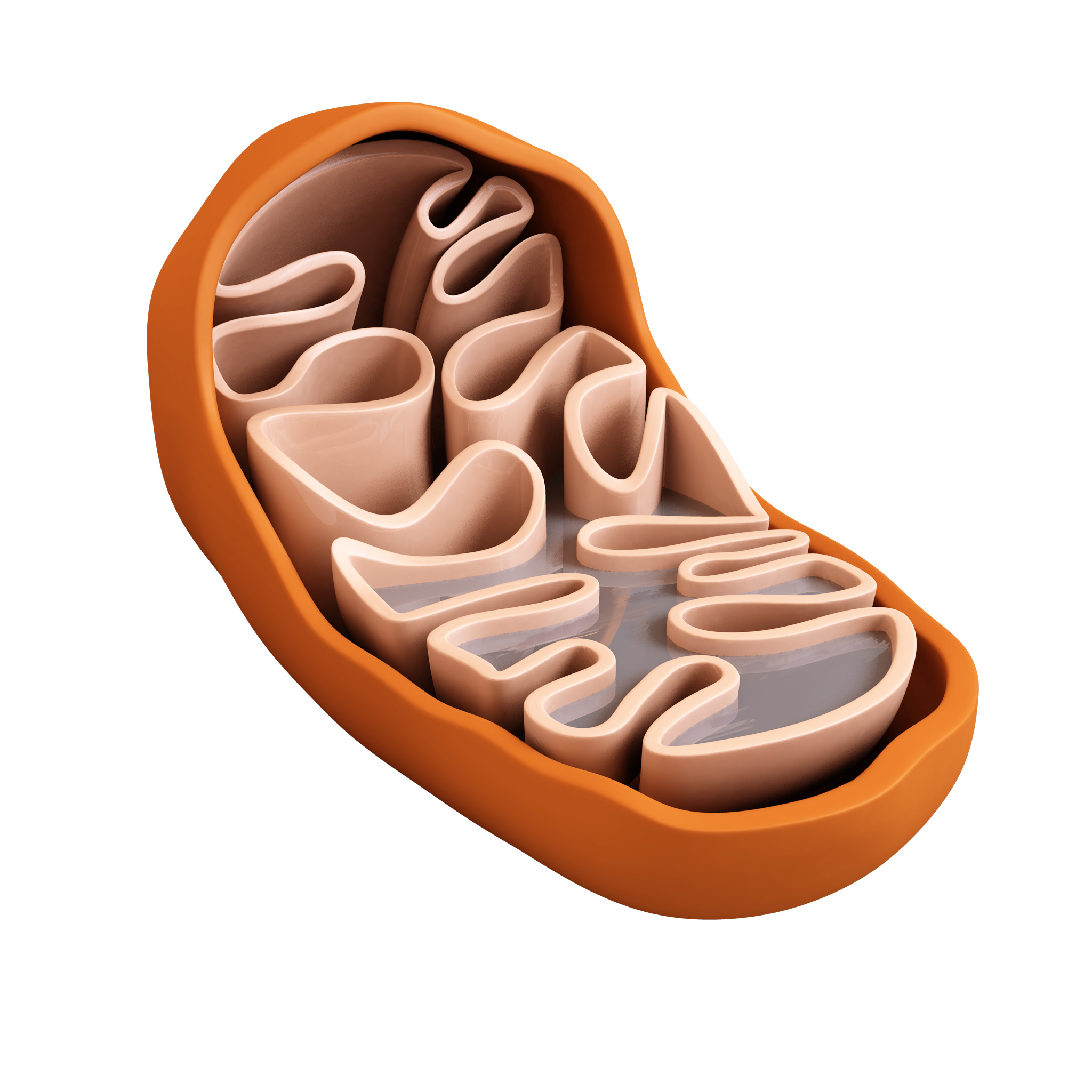
Mitochondria
The powerhouses of the cell. these organelles break down food particles and release their stored energy. the cell uses this energy to fuel all of its activities.
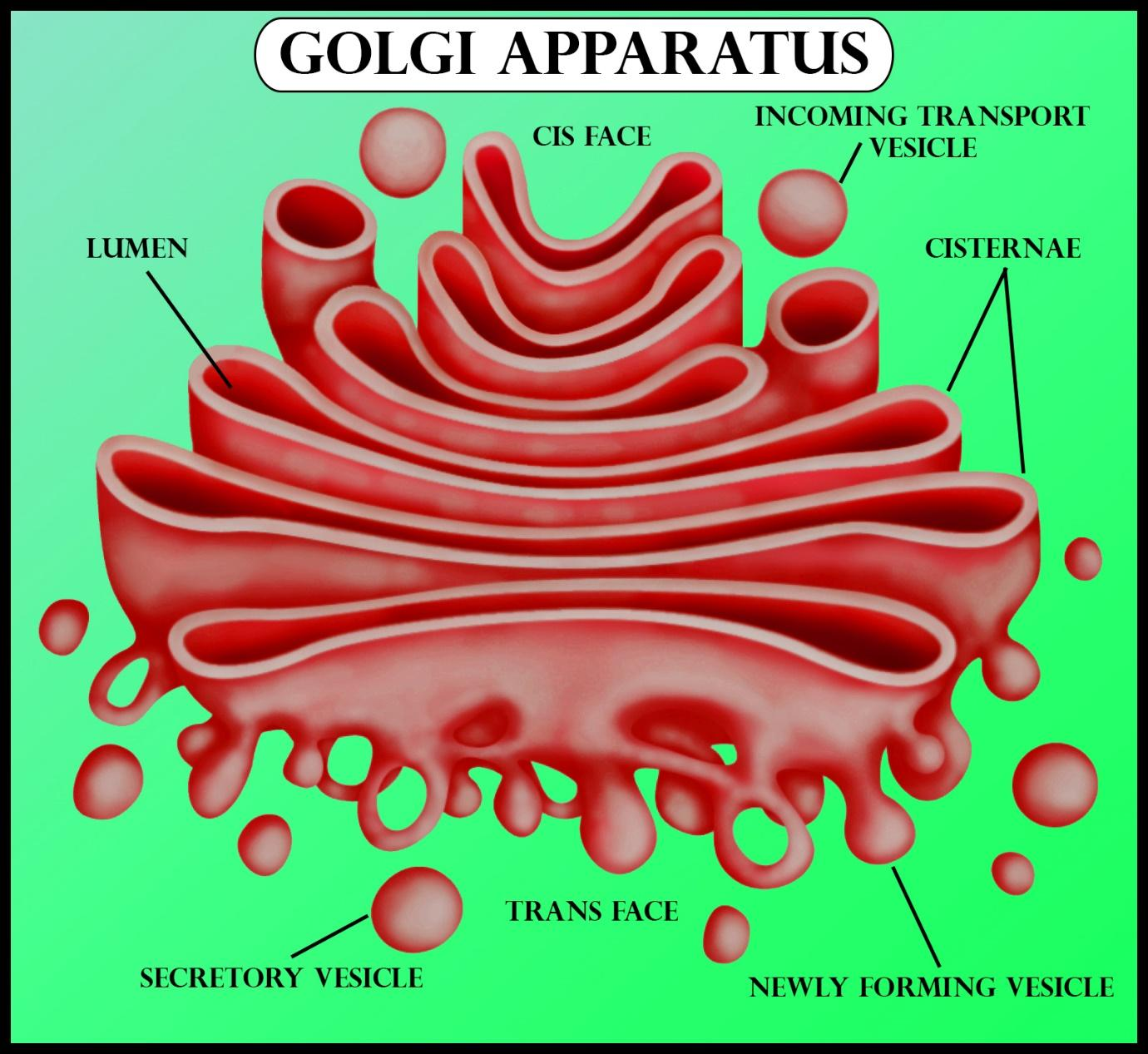
Golgi apparatus
A folded organelle that combines proteins made by the endoplasmic reticulum and delivers them to the rest of the cell and outside the cell.
